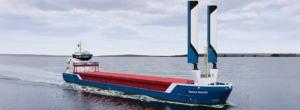Shipping companies and supply chain worldwide are taking action to limit the worst impacts of climate change, according to maritime leaders present at an executive-level event on Nor Shipping in Oslo, says the United Nations Global Compact.
The event was convened ahead of July’s critical government negotiations at the International Maritime Organization (IMO) when its main decision-making body, the Marine Environment Protection Committee (MEPC) is expected to adopt the draft 2023 IMO Strategy on the reduction of greenhouse gas (GHG) emissions from ships.
Reducing greenhouse gas emissions from shipping is crucial to tackling climate change. Maritime transport is currently responsible for approximately 3% of global emissions, but its emissions are projected to grow by up to 30% by 2050.
Last November, the Science-based Target Initiative (SBTi) released the world’s first framework for companies in the maritime sector to set near- and long-term science-based targets in line with 1.5°C.
It shows that alignment with 1.5°C can be met by private sector corporations if they adopt strategies to achieve decarbonisation by the first half of the 2040s.
Sanda Ojiambo, CEO and Executive Director of United Nations Global Compact, a founding member of the SBTi, said: ”Companies in the shipping sector are already setting targets with SBTi to support their transition plans and go beyond existing regulation to align with the 1.5 C temperature goal. We need to see more of them incorporating the SBTi maritime guidance this September at the Climate Ambition Summit hosted by the UN Secretary-General”.
Razan Al Mubarak, UN Climate Change High Level Climate Champion for COP28, noted that “over 11,000 companies have joined the UN-backed Race to Zero campaign who have committed to collectively halve emissions by 2030, but only 7 shipping companies. I call upon shipping actors to turn their commitments into action by incorporating 1.5 SBTi targets into their business – the race is underway and now is the time for shipping to join.”
Several shipping companies have already set targets for well below 2C with the SBTi and are exploring setting a 1.5 aligned target.
Mr. Lasse Kristoffersen, CEO of Wallenius Wilhelmsen said: “We are all doing too little too late on climate change and in Wallenius Wilhelmsen we believe leading companies like us have a big responsibility to bring solutions. We have set a goal to introduce a net-zero emission end-to-end service by 2027. We will not be able to do this alone and are ready to commit to partners that can bring clean fuel, new technology that drives efficiency, and data infrastructure that we can transact upon”.
Leading cargo owners are also increasingly setting targets for their ocean shipping emissions. Elisabeth Munck af Rosenschöld, Global Sustainability Manager, IKEA Supply Chain Operations, said: “We need to accelerate the transformation towards zero emission ocean shipping. It is urgent and it is doable. We have signed the coZEV ambition statement to only ship our home furnishing goods on zero emission ocean shipping by 2040”.
Internationally leading maritime classification societies such as Lloyd’s Register have also aligned their business operations and strategies with a 1.5 target using the SBTi.
Andy McKeran, Chief Commercial Officer of Lloyd’s Register commented: “As we move towards MEPC 80, it is important that the widely anticipated amendments to the IMO’s GHG Strategy mirror the increased level of ambition which we are seeing from many in our industry.
McKeran added that ”the 2020s must be the decade of action for shipping if we are to meet the 1.5°C goal of the Paris Agreement. To achieve this, we must all set ambitious, but achievable, science-based targets to reduce our own GHG emissions and continue to collaborate across the industry to drive advances in zero emissions vessels.”



